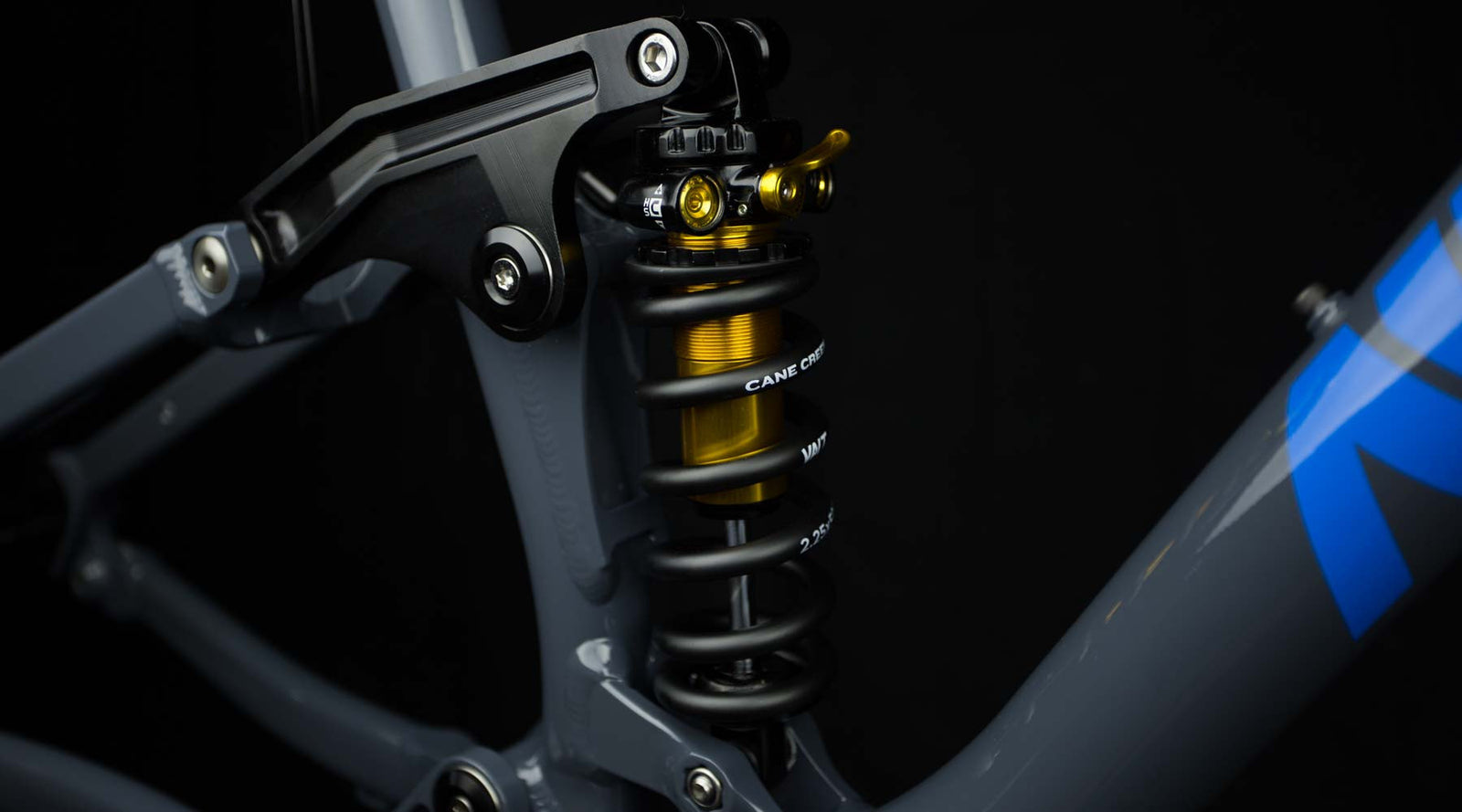
Cane Creek DBcoil IL Part 1
by Ed Brazier October 11, 2016 5 min read
A lot of Airdrop customers ride their Edits pretty hard. It may be a 150mm travel bike, but it’s more than capable on rowdy trails. So when Cane Creek announced a shock that can “bridge the gap between trail bikes and long-travel downhill rockets,” we knew we needed to investigate.
The last few years have seen an explosion in the popularity of our sport, in particular enduro racing. As a result the market for mid travel bikes has become incredibly competitive and that competition has driven brands to develop some amazing bikes. I like to think that the Airdrop Edit is one of them. But they are almost all equipped with air-sprung shocks. In fact when it came to specifying shocks for the Edit, I really only paid attention to the air shocks that were on offer. And it’s worth understanding why.
Air-sprung shocks are typically much lighter than coil-sprung shocks purely because it takes a lot of steel to provide the bounce. You can achieve something very similar with a small volume of air or gas under pressure, and that weighs a lot less. With all the suspension manufacturers focussing on air shocks, it's now possible to get a very high level of performance, adjustability and reliability in a lightweight air-sprung shock.
However, engineering an air spring is very difficult; they require extremely tight tolerances and complex sealing methods to work well, and as a result it takes a bit of force to get an air-sprung shock moving. Compare that to the simplicity of a spring, and it’s clear that coil shocks still have something to offer. Although they’re heavier, coil-sprung shocks are generally considered to be plusher, with greater suppleness at the start of the stroke and are also more linear - giving you access to more of your bike's travel more often.
An over-simplification would be: air-sprung shocks are lighter but stickier whereas coil-sprung shocks are heavier but plusher. So as with so many aspects of bike design, it's a compromise: balancing performance gains and deficits.
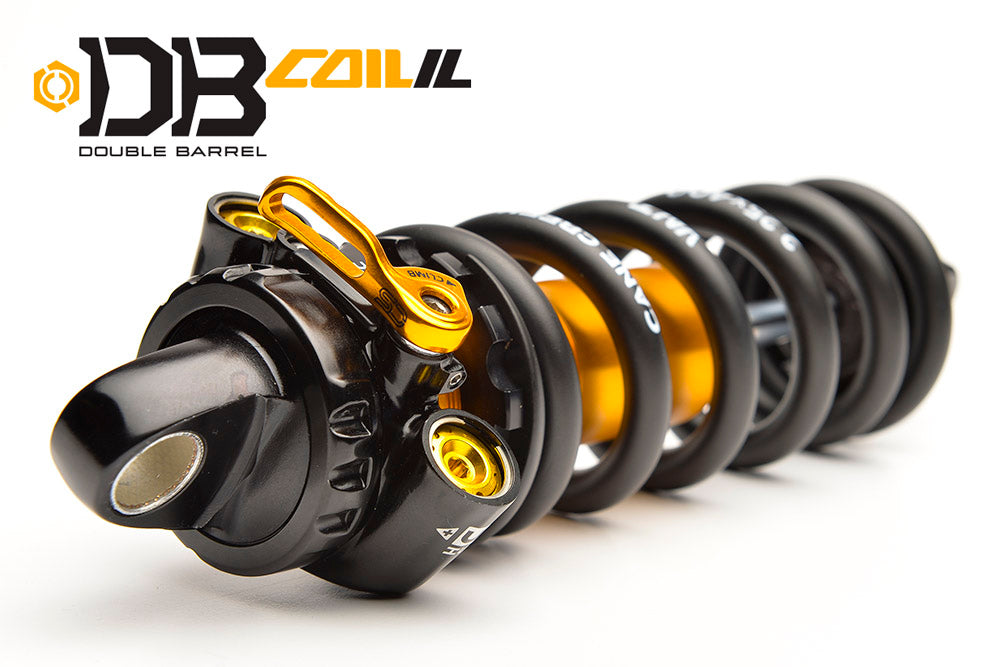
Enter the DBcoil IL
This is where Cane Creek’s latest offering, the DBcoil IL, comes in. The press-release promises “all of the function of an external reservoir coil shock into a lighter and sleeker package.” Essentially it's a coil-sprung rear shock with all the adjustability and control of a piggy-back shock, without the weight penalty. And it has a Climb Switch.
I’ve worked with Cane Creek for a while now, and I can tell you that they’re a fantastic company to deal with. They’re super-positive, hard working and they really believe in what they’re doing. So although there’s a lot of BS out there in marketing-land, when Cane Creek make a claim like this, it’s worth investigating. The guys at Cane Creek felt that the Edit's naturally progressive suspension would be a good fit for the new shock.
When you’re familiar with the recent history of their shocks, the progression is logical:
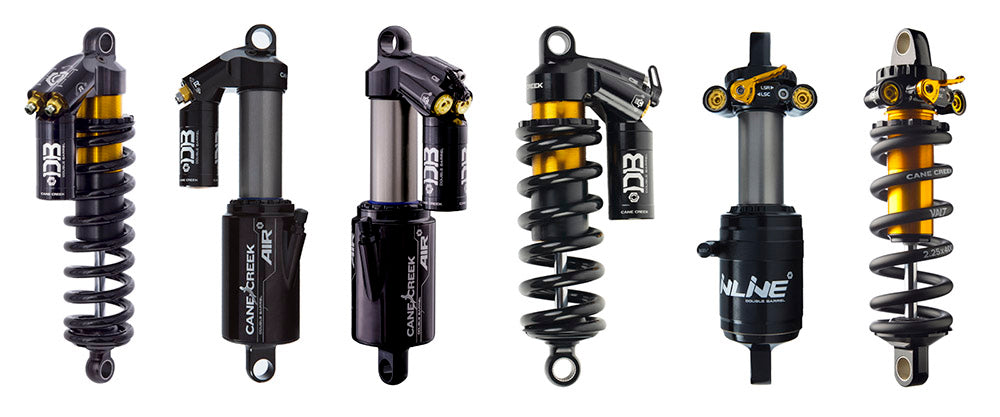
From left to right:
| DBcoil | A coil-sprung, piggy-back shock. Plush and heavy, ideal for DH. |
| DBair | An air-sprung piggy-back shock. Super adjustable but heavy-ish. |
| DBair CS | They figure out how to add a climb-switch making the DBair much more efficient for pedalling. |
| DBcoil CS | Clever. They add the Climb Switch to the DBcoil so you can pedal. But it's still heavy. |
| DBinline | Very clever. The performance of the DBair CS into a very lightweight inline shock. |
| DBcoil IL | Genius. It's a light-ish super plush coil shock with a Climb Switch. |
WORKSHOP TESTING THE DBCOIL IL
Of course, we can't just take their word for it. If we're going to offer this as an option on our bikes, we need to know that the performance and reliability are all there. So we're testing the DBcoil IL to find out. And it's not just a question of whether or not the shock is good on it's own; we need to know how well it marries up with the Edit's kinematics, what the right base-tune is, and which spring rates to recommend. The good news is, this involves mucking about in the workshop and riding bikes - a lot - so we're up for it.
Hypothesis - The DBcoil IL offers a sufficient performance gain to justify a slightly higher weight than an air-sprung shock.
HOW HEAVY IS IT REALLY?
Cane Creek's claim is that the DBcoil IL saves weight by in two ways: by doing away with the piggy-back and thus reducing the oil volume, and through their new lightweight VALT spring. Interestingly, they don't publish a weight for the Valt spring but that's OK because we've got some scales. So let's take a look at how much everything weighs in the real world:

First of all, let's set a benchmark. The Rockshox Monarch RT3 weighs in at 311g, the Monarch Plus RC3 at 381g and Cane Creek's DBinline 366g. For reference, these are all very light considering how well they perform. I didn't have a DBair CS to weigh, but the claimed weight is 509g. Not so light. Let's take a look at the DBcoil IL:

The new Valt spring (I weighed a 450lb) comes in at 346g on it's own. The DBcoil IL damper body weighs 283g which gives a combined weight of 629g. The scales actually read at 631g when I weighed them together. So no surprises: it's heavier than the air-sprung shocks - 320g more than the Monarch RT3, 250g heavier than the Monarch Plus RC3 and 265g heavier than the DBinline.
Nobody said it would be as light as an air-sprung shock, but it's a lot less than a regular coil-sprung shock. I don't (yet) have a regular steel spring to weigh, but the DBcoil IL damper body alone is 160g lighter than the DBcoil CS, and the Valt spring will save a similar amount on top.
Comparing the weights of the shocks alone, it seems like a big increase, but to put it in context, the DBcoil IL is going to add about 0.6-0.7lb to the overall weight of the bike. That's equivalent to a half-full water bottle or a DH casing on your tyres.
DOES IT FIT?
Given that we've tested the enormous BDair CS shock on the Edit, this might seem like a no-brainer. But we can't afford to take anything for granted. So we fitted the damper body without the spring to test clearances throughout the travel:
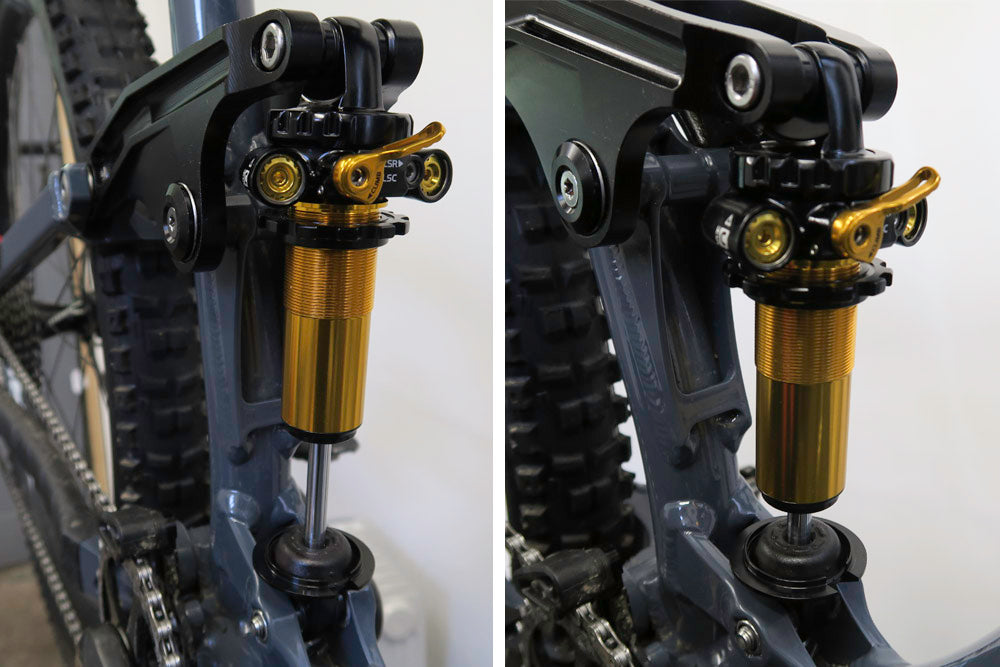
No problems there, so we whipped the shock out of the frame and fitted a Valt spring, to repeat the process:
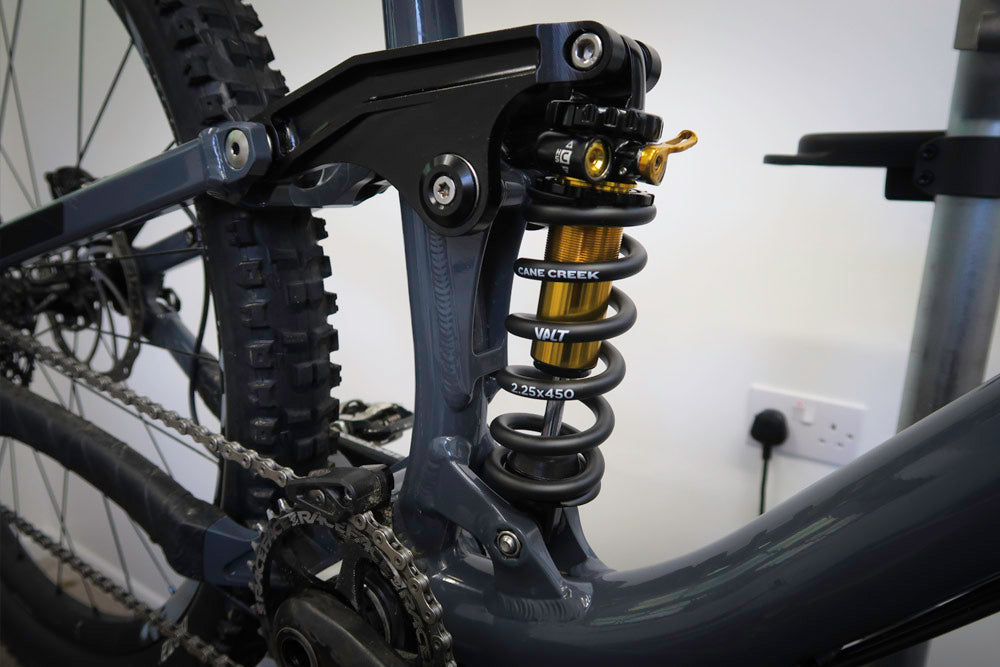
But most importantly, does it look any good?
OK, maybe no the most important thing. But even fitted to my bike, which is a bit of a mash-up of parts at the moment, I think you'll agree it looks the business.

NEXT STEP: RIDE TESTING
Once we got the boring bit out of the way, we were able to get the bike out on the trails and start to really get to grips with the shock. We're trying to work out if the Edit's kinematics are progressive enough for the coil-spring, which is fairly linear. And then to get into Cane Creek's field tuning guide to work out a base tune to get the most out of the shock. There's a lot of adjustability and you could easily make it feel awful with a few clicks in the wrong direction.
Would it live up to it's promise? Would the performance and feel be worth that extra bit of weight? Find out in the next instalment of the blog.
Ed Brazier
Ed is the owner of Airdrop Bikes. A former web and graphic designer, he sacked off his job one day and decided to start up a bike brand.
3 Responses
Rui Ribeiro
June 29, 2017
Were is Part 2 :) I hope you guys can complete the review ASAP. Cheers.
Simo. Howett
October 11, 2016
Can’t wait for the results .
Leave a comment
Comments will be approved before showing up.
Email Newsletter
Our monthly email newsletter gets you access to all the good stuff before everyone else.
Get The Inside Line
We're always working on stuff behind the scenes and we'd like to share those stories with you. One email a month, and we make it worth a read.
Sign up to get the inside line.

Rod Ney
February 28, 2018
What? No Part 2?!? Inquiring minds want to know…